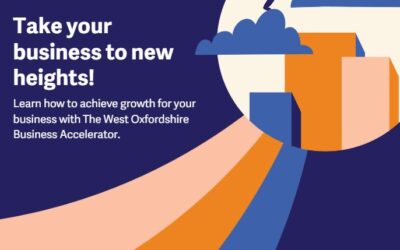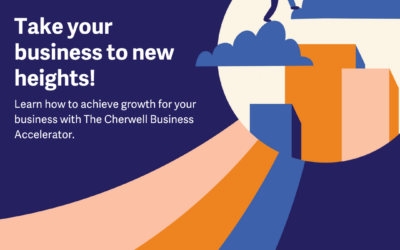Targeting the right audience across all your social media platforms can transform outputs for businesses. This article will help you align audiences with channels so you can drive up engagement and secure more leads.
Every social media channel attracts an audience with varying demographical differences, however slight these may be, and different expectations from you as a business.
Nailing the content and messaging for each audience can be challenge. Cast your net too wide and your content might not reach the right people, go too niche and you might miss opportunities that present themselves.
Content, meet audience
Even the best content in the world will fail if it doesn’t reach the right audience.
Standing out in the social noise has never been so important, and having unique content paired with well-defined audiences for each social channel is key to making an impact and attracting engagement.
If you’re managing your business socials by yourself, time is precious – you don’t want your hard work falling on deaf ears.
Paid social can help provide a clear vision of the wants and needs of the people you’re trying to target, and take some of the pressure off of your organic posts’ performance.
The huge benefit of paying to place or promote your content is that platforms help you get very granular with audience selection, right down to parameters such as age, skills, and location.
2023 is going to make things even tougher when it comes to getting your content in front of your target audience, with so many new and emerging platforms, as well as added and enhanced features on existing platforms.
And if you think a one-off post will create an audience, then think again! Audiences are built over time as a result of regular, relevant and meaningful content, making your organic content every bit as essential as your paid posts.
Let’s take that first step of defining your audiences by looking at each platform individually.
Social media channels and their audiences
- Facebook has more than 2.74 billion active monthly users
- 56% of Facebook users over the age of 13 identify as male
- 42% of Facebook’s monthly active users are located in the Asia-Pacific region
- Europe, as a whole, compromises of 15.9% of Facebook’s users
- 25-34 year olds make up the largest portion of Facebook users
- There are over 340 million Twitter users globally- however, research predicts that Twitter will lose about a million users to other platforms over the next five years.
- More than 80% of Twitter’s global audience is under 50 years old
- The Twitter gender breakdown is evenly split
- The platform typically attracts a highly-educated and high-earning user-base
- Twitter’s Spaces feature is expected to remain popular and breathe new life into the platform
- LinkedIn has over 760 million users worldwide – 160 million+ of these are based in Europe
- 4 million+ small business owners members globall
- 46-55 year olds make up the biggest portion of LinkedIn’s general audience (37%); however, 25-34 year old’s dominate when it comes to LinkedIn’s advertising audience, likely because of their high purchasing power and early career status
- 1% of global Instagram audiences are aged between 25 and 34 years old; in total, over two-thirds of total Instagram audiences are aged 34 years or younger
- The gender split between Instagram users globally is even
- There are over 1 billion active monthly Instagram users globally
- 66% of UK Instagram users accessed the app daily
- Research found that the top interests on Instagram are travel (45%), music (44%), and food and drink (43%)
TikTok
- Roughly 50% of the TikTok community is under the age of 34, with 26% between 18 and 24
- TikTok already has 1 billion active monthly users – and is the fastest growing social media platform. It’s a leading destination for short-form content!
- Tiktok has 3.7 million active users in the UK, engaging with the app for an average of 41 minutes a day
- 35% of TikTok users have participated in hashtag challenges, while 64% have tried the platform’s face filters and lenses.
How to define your audience on social media
First things first – once you understand the target demographics for your brand or organisation, this needs to be compared to the broader overview of who’s using each social media channel.
Considerations needed at this stage include your brand’s tone-of-voice, language, and messaging relevant to the demographics of each channel.
When you decide who you’d like to target, understanding how they’re using these channels is the next step.
Are they likely to engage with content that sells a product, or do they want educational content? Does more informal content (“behind-the-scenes”, day-to-day etc.) resonate better with your followers, something Instagram is perfect for, or is it strictly business, making Linkedin ideal for you?
Also take the time to look at what content formats they interact with most – do they prefer video, images or text?
If you have a younger target audience, TikTok is a great platform to consider – even if it feels unaligned to your brand, amazing things are happening on that channel and it can’t be ignored.
TikTok is not just for creating dances and funny video shorts; it’s also an opportunity to extend brand awareness for big and small businesses.
Summary
Defining the specifics of your target audience is great for ROI from a monetary and an engagement standpoint. Knowing what type of content your audience wants to see also speeds up content creation by providing set topics for you to work with.
Key tasks for defining your social media audience
Persona Research
Learn everything there is to know about the personalities who buy from you.
Platform Research
Understand which social media platforms you are most likely to find your target audience on, and if your audience is split across multiple platforms, decide how to differentiate your tone, language, and message for each one.
Competitor Knowledge
Get an overview of how other businesses are engaging with your target group. You’ll know what you’re up against and see what works for them when they create content.
Measure and Track
Analytics are everything. This will provide data-led insight into what your audience interacts with, how they engage, and where they go to get their content.
Like what you see?
More Articles
Unlock Your Business Potential with the OxLEP West Oxfordshire Business Accelerator Programme
The OxLEP West Oxfordshire Business Accelerator Programme offers tailored support, expert mentorship, and growth-focused workshops to help SMEs in Oxfordshire’s Cherwell District innovate, expand, and succeed in a competitive market.
Unlock Your Business Potential with the OxLEP Cherwell Business Accelerator Programme
The OxLEP Cherwell Business Accelerator Programme offers tailored support, expert mentorship, and growth-focused workshops to help SMEs in Oxfordshire’s Cherwell District innovate, expand, and succeed in a competitive market.
LAST CHANCE: Cherwell’s rural businesses urged to sign up to grant fund launch
Find out why Oxfordshire businesses are calling for networking events – and opportunities to connect with the local business community – now more than ever.





